
They are docile, easy to care for, not too picky, and beautiful to boot.
But do corn snakes bite at all? Or is that not something you have to worry about with these gentle creatures.
They’re non-venomous and one look at the tiny teeth will tell you that, even if they do bit, it’s not something you have to be worried about.
But what if you have small children? Then you need to know exactly what to expect
Could your corn snake bit you or your children? Let’s find out.
Table of Contents
Do Corn Snakes Bite?
Corn snakes rarely bite. They are popular pets, because they are docile and not usually aggressive. But that does not mean these snakes never bite.
If they feel threatened, or if they are otherwise irritated, they can lash out. The good news is: corn snake bites are not serious and not overly painful either.
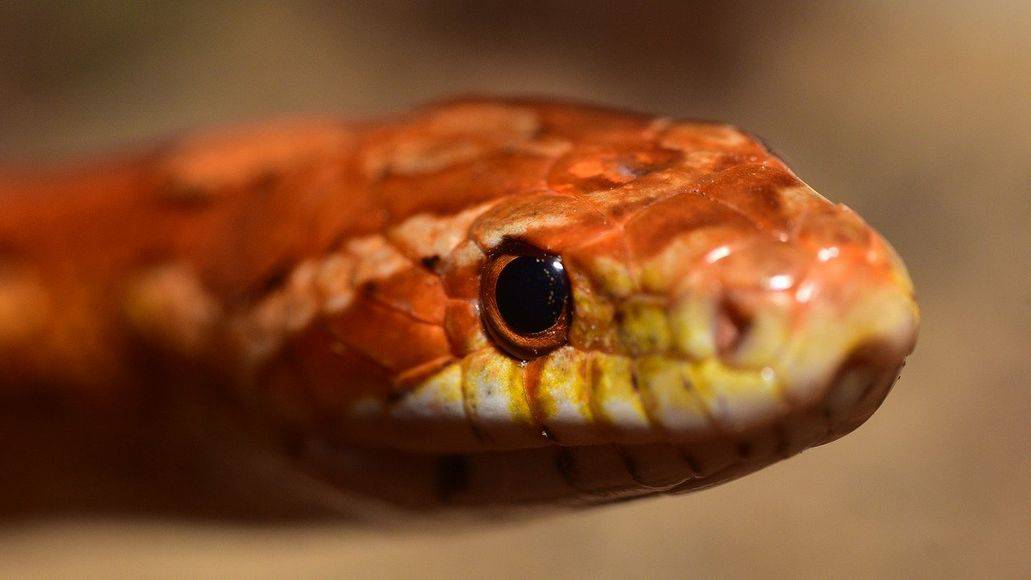
We’ll take a closer look below at situations that could cause your corn snake to become more aggressive, so you know what to avoid and when to avoid handling your snake. First, let’s take a closer look at the corn snake in general, and as a pet.
The Corn Snake
Some say corn snakes get their name, because they are regularly found around grain stores. They like being around grain stores, because they know that this is where mice and rats are found.
Others say the snake gets its name from the corn-like pattern on its skin. They are bright yellow/orange in color with red black-edged blotches. There are color variations, put down to the age of the snake and where it comes from. There are also many cool-looking morphs.
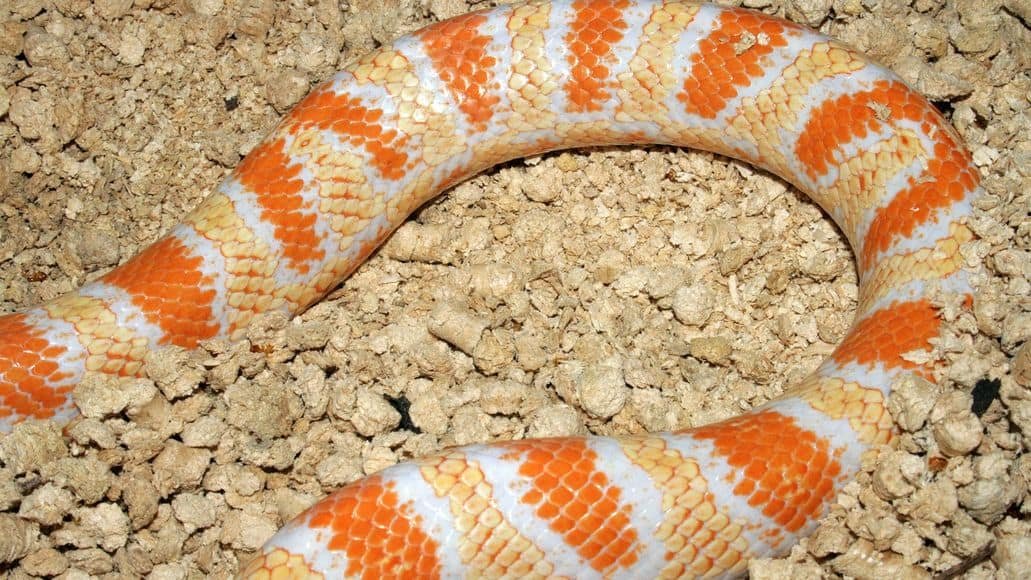
In the wild, you’ll find the corn snake in meadows, on rocky ground, in barns, and in old buildings no longer in use.
Misleading Coloration
The fact that the corn snake is not venomous or dangerous at all surprises some, due to the aforementioned lovely bright yellow/orange coloring. There is a prevailing belief that bright colors signal danger among snakes, but it is not true in most cases.
Aposematism refers to unusual colors or behavior in animals warning predators that they are toxic or otherwise dangerous. Many animal species use bright colors to warn predators, but it is not generally the case for snakes.
There are many bright snakes, like the corn snake, that are neither toxic nor dangerous. In fact, the corn snakes is one of the best pet snakes for beginners.
Corn Snakes As Pets
Corn snakes are low maintenance, beautiful to look at, they can become used to handling, and they’re silent. This is good news when you live in a small apartment close to your neighbors.
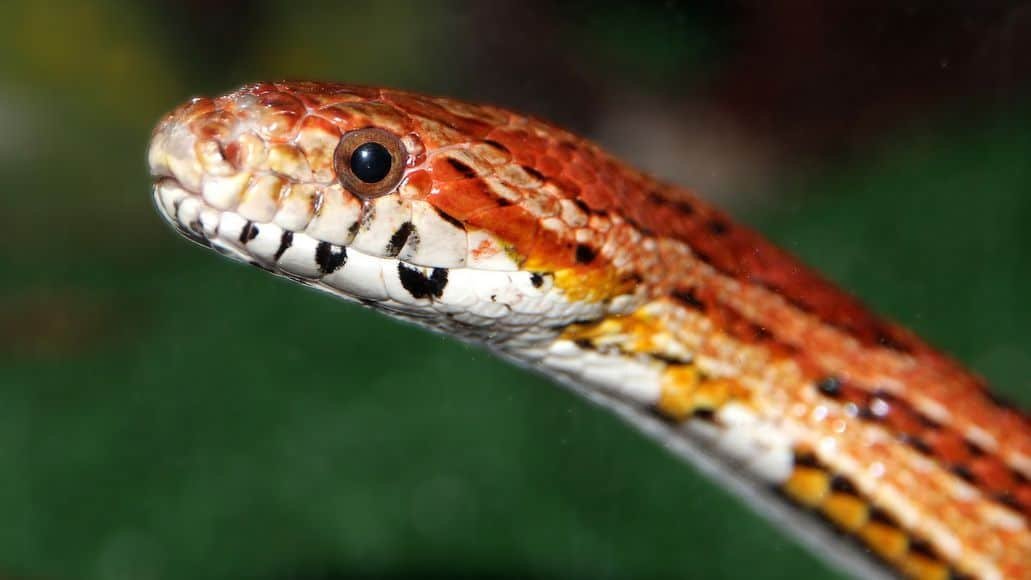
If you are are a first-time snake owner, you should definitely consider the corn snake. It makes a great pet snake, because it is easy-going and docile, non-venomous, it never grows too large, is not as picky about its environment as many snakes, and it does not need many accessories in its enclosure.
As long as it has bedding, heat, hiding spots and things to climb and play on, it will be happy.
Do Corn Snakes Need A Heat Lamp?
Like all reptiles, the corn snake is ectothermic, meaning it depends on its environment for regulating body temperature. Heat is important for reptiles as it
- allows them to digest their food.
- circulates the blood
- enables them to reproduce.
- enables them to move their muscles and catch prey. Corn snakes don’t inject their prey with venom – they constrict the likes of mice until they die from lack of oxygen. Corn snakes do have teeth, and these teeth all point backward. Using their teeth to grip their prey, escape is all but impossible for the rodents, birds, and lizards it feeds on.
Your corn snake needs heat, and it relies on you to provide it. One of your primary responsibilities as a snake owner is to provide a habitat that is as close as possible to your snake’s natural environment. This includes providing the correct temperature.
You have a number of options for heating your pet’s enclosure. You can heat it from above, using a heat lamp or basking bulb. You can also heat the habitat from the ground up, using a heating pad.
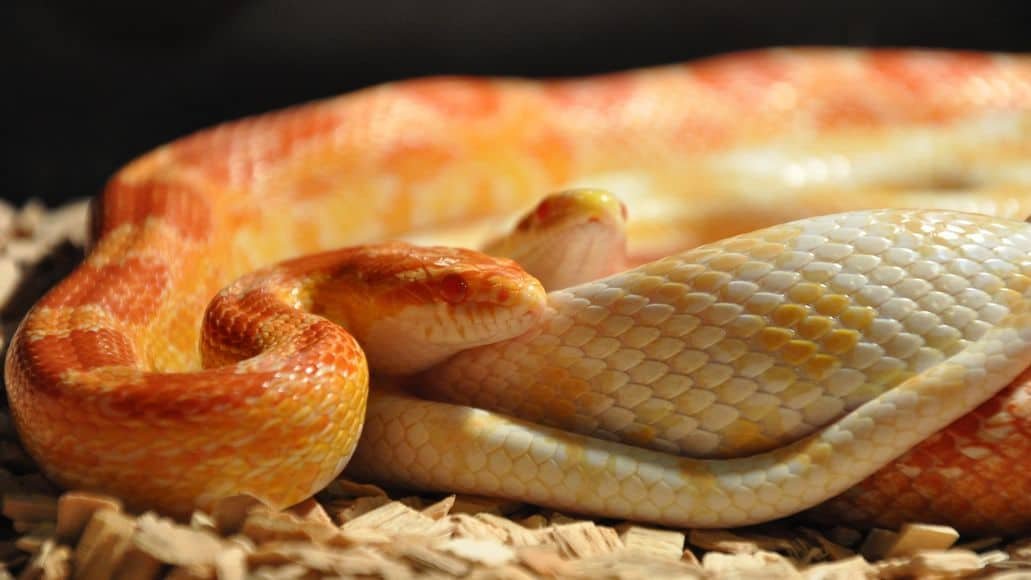
Whichever method you choose, you want to create a temperature gradient from one side of the cage to the other. The hot side should be 85° F and the cold side should be about 75° F.
Corn Snakes Like To Burrow
Corn snakes are semi-fossorial, spending quite a bit of their time underground. Most snakes like to hide, more so during the day if they’re a nocturnal type of snake. The corn snake is more a nocturnal snake than a day time snake. It likes to spend the day curled up in holes.
Snakes in the wild do this to keep themselves protected from predators and also to maintain a stable body temperature. Snakes are also private creatures, so when you prepare an enclosure for your corn snake, you’ll need to provide it with places to hide.
To satisfy its love of burrowing, make sure you choose a substrate that is good for digging. To satisfy its need to hide, get it two good hiding spots.
But you also want to make sure the enclosure does not become too cluttered. A crowded enclosure can stress your snake. That is why it is always good to get a bigger tank.
What Makes Corn Snakes Aggressive?
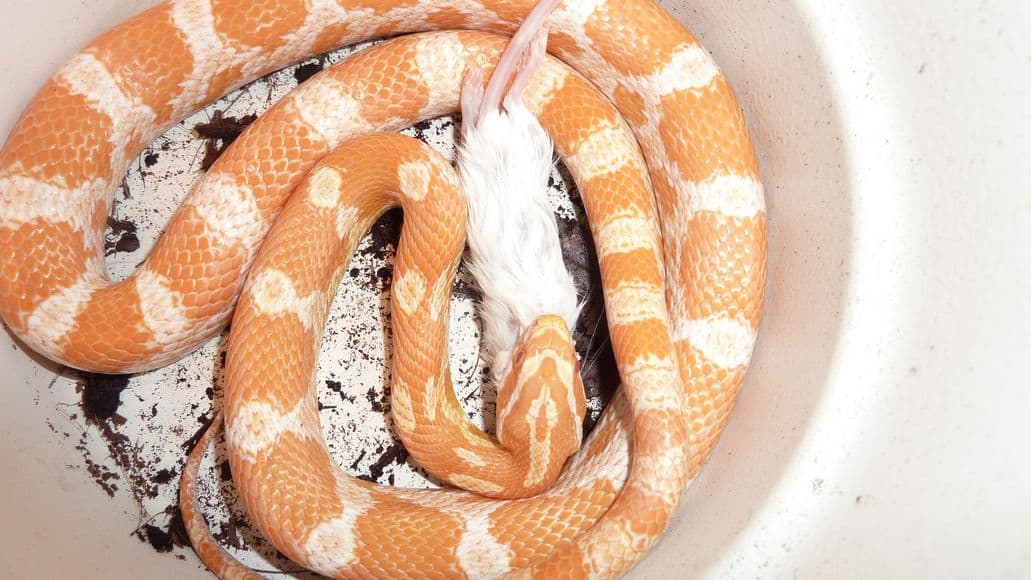
You can’t assume that your corn snake will always be calm and placid, because even reptiles have bad days. There are actually a few aggressive behavior types you’ll discover in your corn snake: territorial, feeding, or defensive responses.
Male and female corn snakes are much the same when it comes to temperament. Both are fairly gentle, placid snakes and they rarely bite or strike out at humans.
Even a worm can turn though, and this seemingly gentle reptile can display aggression occasionally, particularly in certain situations, such as the following.
When Threatened
Who wouldn’t show some aggression if they were being tormented or harassed? There is a thin line between a snake recognizing you as the handler and seeing you as a predator. Any sudden, unfamiliar movements can cause your gentle pet to flare up.
When Shedding
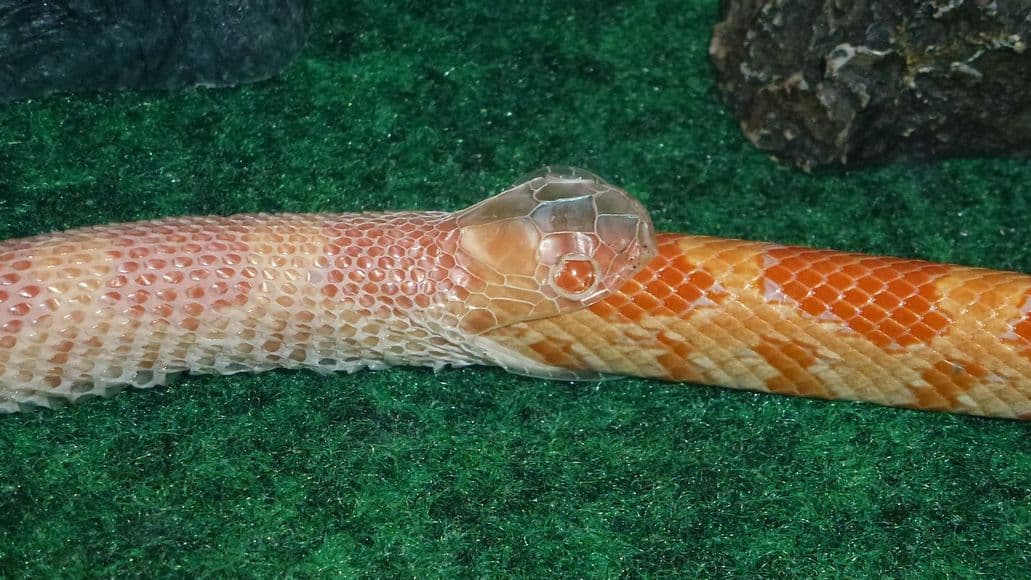
When you’re in a fitting room trying on clothes, you’d likely become highly irritated if a salesperson sticks their head in and asks if everything’s okay. It is the same with snakes. When they’re changing, i.e. shedding, they can be irritable, and they just want their privacy.
At shedding time, you’ll notice that your snake’s eyes turn milky blue and the skin also takes on a dull whitish sheen. When the corn’s eyes clear again, the snake is ready to shed.
Help your snake over this ‘aggressive’ shedding period by providing the reptile with a shallow dish of tepid water to soak itself in. But do not handle your snake at all. Just leave it in peace until the shedding is done.
Corn snakes need to shed every few weeks when they are young. Once they reach maturity, they only shed a few times a year, since their growth rate slows down considerably.
When Stressed
Snakes like routine. They don’t like change and prefer calm consistency. Many humans find change, like moving house, very stressful. The same goes for your snake. Being moved to a bigger enclosure is stressful and frustrating, as is any other big change in its normal routine.
When Feeding
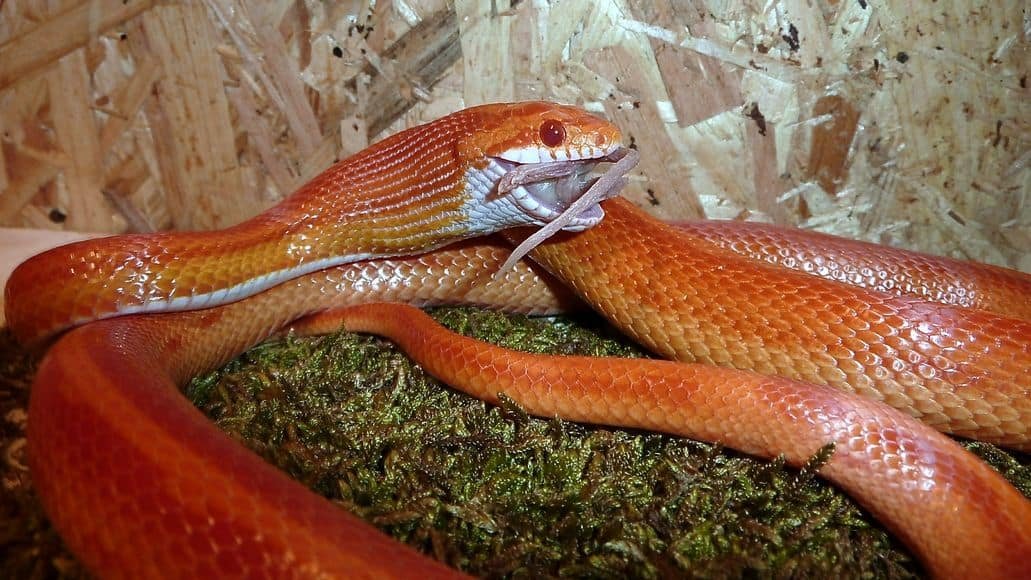
Any snake is naturally aggressive when feeding as it wants to protect its food from predators. Also, a snake is sluggish after a meal, and it’s best to avoid handling your snake for about 48 hours once it has fed.
A Bite Is Mostly Harmless
Fortunately, if your corn snake is feeling a bit aggressive and it bites you, it is really no cause for alarm. It’s merely a warning to be more cautious around your pet.
Corn snake bites don’t really hurt and they are not dangerous. The only risk is an infection, so make sure you clean the affected area well with soap and water. If it does get infected, seek medical attention.
Do Corn Snakes Smell?
Snakes out in the wild have the sun, fresh air, and nature in general looking out for them. Even so, most snakes, even in nature, have a slightly fishy smell – not offensive, but a whiff nonetheless.
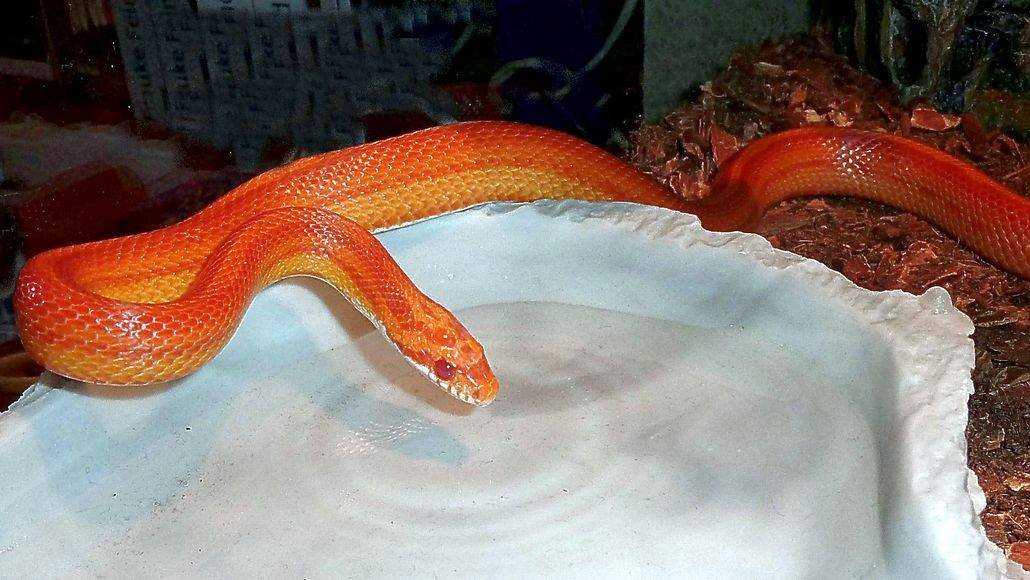
But what happens with a snake in captivity where shedding, urination and defecation all happen under one roof?
As long as you keep the enclosure clean, it won’t be a problem. Corn snakes don’t really have an odor, unless you leave them to live in filth. Do spot cleaning as soon as you notice urine or feces to remove the offending material along with any soiled substrate.
In addition, do a deep clean once a month, where you complete swap out all substrate and clean the tank and all accessories.
Snakes are clean animals, so smell is not generally an issue. But they can emit snake musk, a foul-smelling odor from their cloaca when threatened, to scare off predators. As long as you handle your snake with care, this should not happen to you.
Handling Your Corn Snake Properly
It is important not to be hesitant or dithery around your snake, but to handle it with confidence. Wash your hands before handling your snake. It is important to support your snake’s body when handling it. Never grab your corn snake by the end of its tail to pick it up.
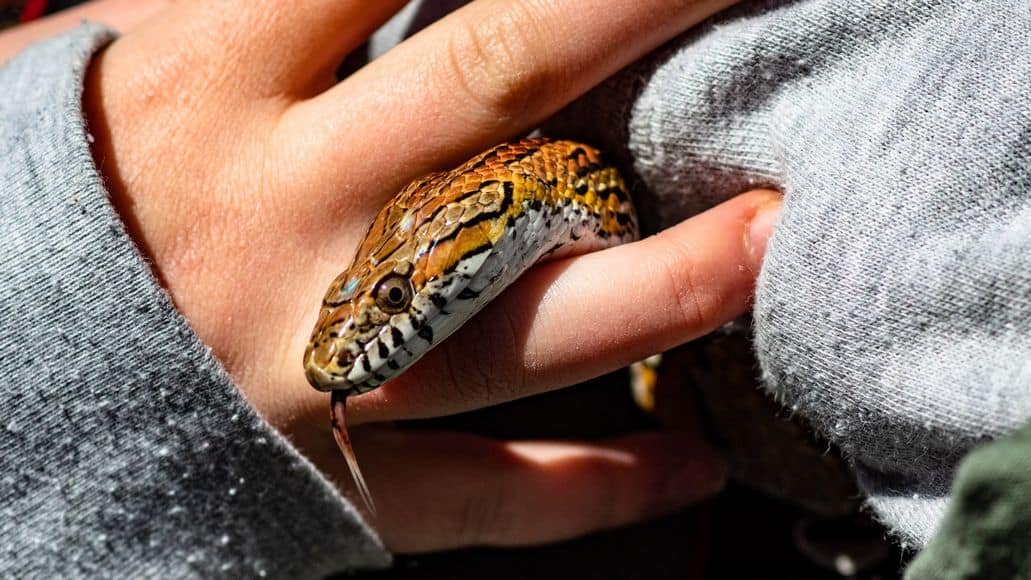
Calmly remove the lid of the cage. If you prefer, you can put on light gloves for grabbing the snake. Reach in calmly and confidently and grasp your snake about 1/3 of the way along the body with one hand.
With the other hand grab your snake about 2/3 of the way along the body. This ensures your snake is well supported as you lift it out. Later on, as you gain experience, you can use a hook to remove your pet from the enclosure.
Do Corn Snakes Bite? Final Thoughts
All corn snakes are individuals with different personalities. They are one of the most popular pet snakes, due to their calm temperament. They’re also popular because they’re non-venomous constrictors and easy to care for.
Perhaps one of their biggest draws as a pet is that they rarely bite. Even when they feel threatened, biting their human handlers isn’t their style.
Having said that, there are times when they do resort to biting. A bite from a hatchling causes no pain and a bite from an adult may draw a bit of blood. It will feel like a pinprick.
When it comes to feeding, your corn snake will bite to get a grip, constricting itself around its prey. The corn snake’s fangs are aligned in a row on the sides of its mouth, enabling the snake to move its prey back into its throat.
Beautiful colors, low maintenance, as ‘friendly’ as any reptile can be, slow to anger and slow to bite, the Corn Snake’s good reputation as a fantastic pet remains unquestionable.
Leave a Reply